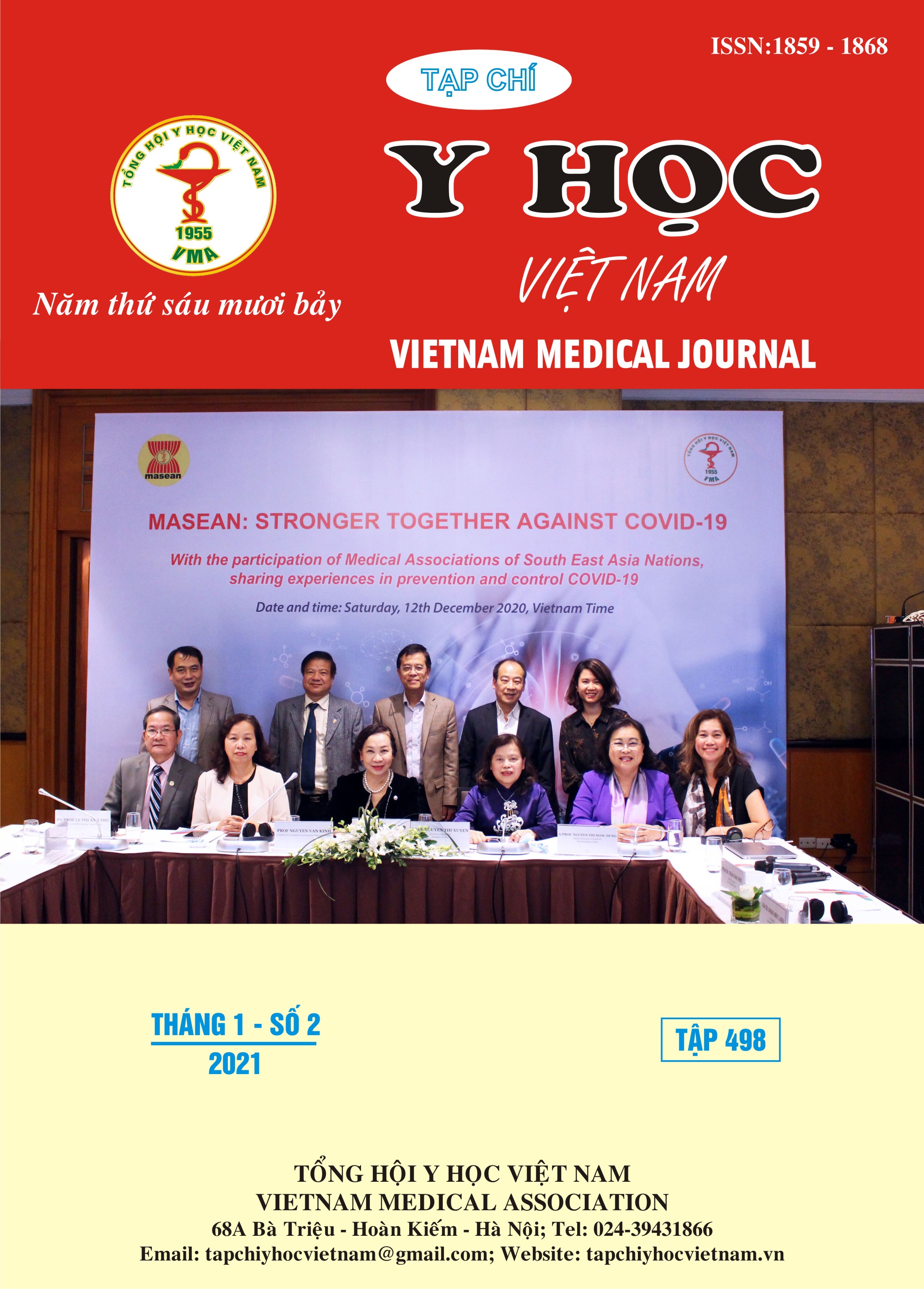ARV ADHERENCE AMONG HIV PATIENTS RECEIVING BUPRENORPHINE/NALOXONE TREATMENT IN HANOI
Main Article Content
Abstract
Aim:This article aims to describe the ARV adherence rate and associated factors in this population. Methods:Conducting quasi-experimental design (no controlled group) at 4 outpatient HIV clinics in Hanoi between 2016 and 2019, 136 participants and followed up within 12 months. ARV adherence was measured by VAS (visual analogue scale). Mixed-effect model was applied to identify factors associated with ARV adherence. Results: 96.3% of participants were male with mean age 38,8±5,8 years, 43% were employed,53,7% used heroin over 10 years and mean CD4 count was 411±216 TB/mm3. Self-reported timely ARV pills taking from 90% or more in the last 7 days is 80.6% at baseline, 87% at 6 months and 79.4% at 12 months. Findings from the mixed-effect model analysis showed that having positive with morphine in the urine test (OR=0.24; 95% KTC: 0.06-0.90) and HIV viral load ≥ 200 copies/mL(OR=0.07; 95% KTC: 0.02-0.28) and receiving ARV treatment after participating in the study (OR=0,28; 95%KTC: 0,08 – 0,96) lead to poor adherence to ARV medication. Conclusion: The percentage of optimal ARV adherence after 12 month follow is relative good among patients receiving both ARV and buprenorphine treatment.
Article Details
Keywords
ARV adherence, integration buprenorphine/naloxone and HIV treatment
References
2. Cục phòng, chống HIV/AIDS (2020), Báo cáo kết quả phòng, chống HIV/AIDS năm 2019 và nhiệm vụ trọng tâm năm 2020, .
3. Low A.J., Mburu G., Welton N.J., et al. (2016). Impact of Opioid Substitution Therapy on Antiretroviral Therapy Outcomes: A Systematic Review and Meta-Analysis. Clin Infect Dis Off Publ Infect Dis Soc Am, 63(8), 1094–1104.
4. Basu S., Smith-Rohrberg D., Bruce R.D., et al. (2006). Models for integrating buprenorphine therapy into the primary HIV care setting. Clin Infect Dis Off Publ Infect Dis Soc Am, 42(5), 716–721.
5. Diep N.B., Korthuis P.T., Trang N.T., et al. (2016). HIV patients’ preference for integrated models of addiction and hiv treatment in vietnam. J Subst Abuse Treat, 69, 57–63.
6. Sethi A.K., Celentano D.D., Gange S.J., et al. (2003). Association between adherence to antiretroviral therapy and human immunodeficiency virus drug resistance. Clin Infect Dis Off Publ Infect Dis Soc Am, 37(8), 1112–1118.
7. Moatti J.P., Carrieri M.P., Spire B., et al. (2000). Adherence to HAART in French HIV-infected injecting drug users: the contribution of buprenorphine drug maintenance treatment. The Manif 2000 study group. AIDS Lond Engl, 14(2), 151–155.
8. Ortego C., Huedo-Medina T.B., Llorca J., et al. (2011). Adherence to highly active antiretroviral therapy (HAART): a meta-analysis. AIDS Behav, 15(7), 1381–1396.
9. Tran B.X., Nguyen L.T., Nguyen N.H., et al. (2013). Determinants of antiretroviral treatment adherence among HIV/AIDS patients: a multisite study. Glob Health Action, 6(1), 19570.


